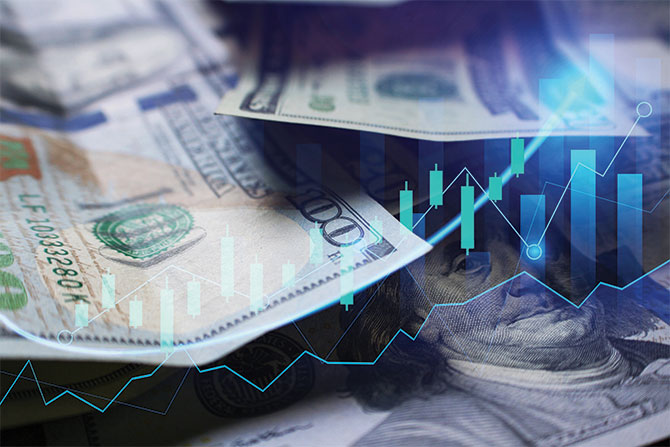On the first trading day of 2022, the U.S. 10-year Treasury Note yield jumped above 1.60%, then traded up another 10bps in the two subsequent sessions. That was a 35bps increase in two weeks and aligned with a similar move higher for market measures of inflation expectations. The bond market hadn’t seen a worse start to a year since 2009. It seems the market is entering the new year with the same concerns and uncertainty that plagued it for most of 2021, but with greater urgency. We’ve seen this movie before, though, and it’s clear that policymakers and investors alike need to carefully assess the strength and staying power of an inflation environment that’s unusual but not so transitory.
Typically, an inflationary impulse arises late in an economic cycle and is driven by an overheated economy where everything is maxed out and hitting on all cylinders, and strong demand is pulling up the general price level. That is not really what is happening now. Instead, we’re dealing with “supply shock” inflation, where COVID-induced shutdowns produce bottlenecks and sclerotic trade flows. Dockworkers, truck drivers, processing personnel and other key points in the supply chain are working with reduced staffing and capacity, causing ripple effects throughout the system. So, are rate hikes and a tighter monetary policy the right medicine for “supply shock” inflation as is normally the case with “demand-pull” inflation? Or might a higher cost of borrowing just exacerbate the supply chain disruptions?
Former Treasury Secretary Lawrence Summers recently warned of a trying period for the U.S. economy in coming years with a risk of recession followed by “stagnation.” He fears that “we are already reaching a point where it will be challenging to reduce inflation without giving rise to recession.” Fed decision-makers are all too aware that if they move too aggressively and inflation really is just a matter of temporary supply chain problems, they run the risk of creating recession to little purpose. The Fed needs to go slow if the inflation trend is truly benign. But if it has deeper, more fundamental roots, too gradual a policy would allow inflationary psychology to become embedded in the economy, risking a wage-price spiral, pushing households and firms to get ahead of assumed cost increases and resort to stockpiling. That’s the Summers worst-case scenario: a return to 1979.
Short-term yields have risen commensurate with the expectation of multiple rate hikes. All members of the Federal Open Market Committee (FOMC) now see at least one, and some see as many as four hikes in 2022.
There can be no question that the Fed is right to accelerate the “tapering” and stop pumping liquidity into an over-liquified banking system. In their zest to prop up the economy to when COVID was new, they characteristically overdid the job, creating way too much cheap money, distorting financial markets, and fueling asset price bubbles in speculative assets that pose serious risks going forward. The quantitative ease needs to stop. That’s the easy part of the Fed’s task. The hard part is subsequently determining when and how fast to raise rates.
The flattening yield curve reflects the dangerous waters the Fed must navigate. Short-term yields have risen commensurate with the expectation of multiple rate hikes. All members of the Federal Open Market Committee (FOMC) now see at least one, and some see as many as four hikes in 2022. Longer-term yields, though, have behaved differently. Despite the new year’s jump, the 10-year yield remains below its March 2021 high of 1.75%. That may change, of course, but the fact that yields in the long end have moved so slowly up to this point has allowed the yield curve to flatten and belies genuine concern about growth going forward. The Fed is indeed walking a tightrope. Let’s hope they’re able to keep their balance.
Jeffrey F. Caughron is Chairman of the Board with The Baker Group. He has worked in financial markets and the securities industry since 1985, always with an emphasis on banking, investments and interest rate risk management. You can contact him at 800-937-2257 or jcaughron@GoBaker.com.











